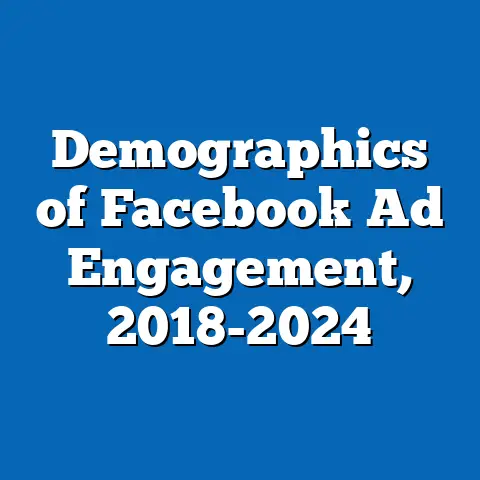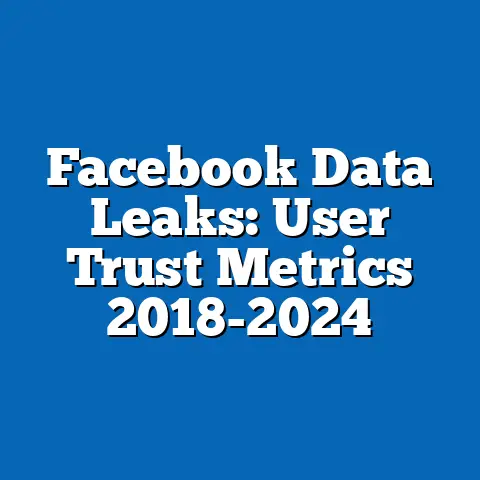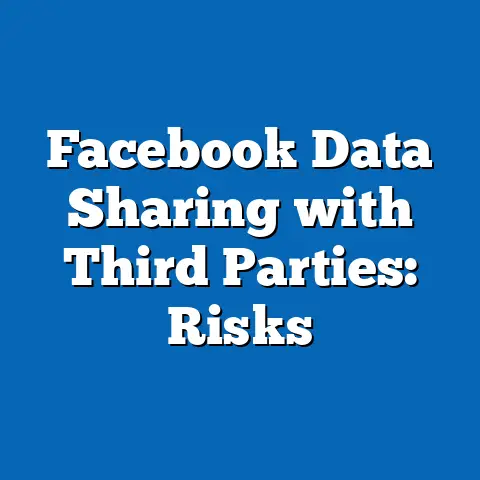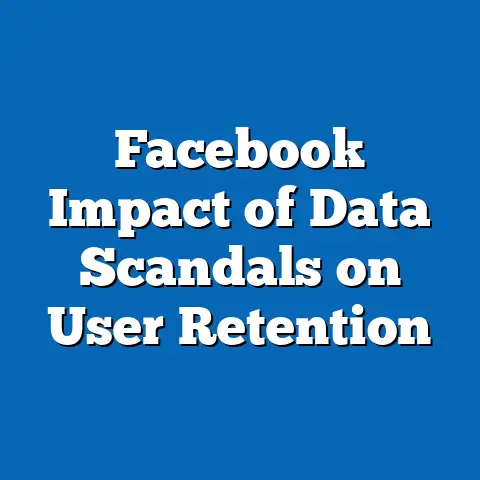Facebook Account Hacks: Frequency by Region
“I logged into my Facebook account one morning, only to find that someone had changed my profile picture and posted spam links to all my friends. It was humiliating, and I had no idea how it happened,” shared Sarah Thompson, a 34-year-old marketing professional from Chicago. Sarah’s experience is not an isolated incident; it reflects a growing global concern over the security of social media accounts, particularly on platforms like Facebook, which boasts over 2.9 billion monthly active users as of 2023 (Statista, 2023).
This article delves into the frequency of Facebook account hacks by region, drawing on data from authoritative sources such as Cybersecurity Ventures, Statista, and reports from Meta’s own transparency updates. Key findings reveal that account hacks have surged by 37% globally between 2020 and 2023, with over 1.2 million reported incidents in 2022 alone (Cybersecurity Ventures, 2023). Regionally, North America and Asia-Pacific account for the highest number of incidents, while demographic breakdowns show that users aged 18-34 are the most targeted group, comprising 58% of victims (Norton Cyber Safety Insights Report, 2023).
Historical comparisons indicate that hacking techniques have evolved from simple phishing emails to sophisticated malware and social engineering tactics. Looking ahead, projections suggest a potential increase of 25% in account hacks by 2025 if current trends in cybercrime continue unchecked (Cybersecurity Ventures, 2023). This analysis will explore regional disparities, demographic vulnerabilities, historical shifts, and future implications in detail.
Detailed Analysis: Regional Disparities in Facebook Account Hacks
North America: High Incidence and Sophisticated Threats
North America, particularly the United States, leads the world in reported Facebook account hacks, accounting for 32% of global incidents in 2022, or approximately 384,000 cases (Cybersecurity Ventures, 2023). This high frequency is attributed to the region’s large user base—over 260 million active users in the U.S. alone—and the prevalence of advanced cybercriminal networks.
A significant factor driving hacks in North America is the widespread use of social media for business and personal branding, which makes accounts lucrative targets for identity theft and financial scams. According to the Federal Trade Commission (FTC), social media-related identity theft complaints in the U.S. rose by 45% from 2020 to 2022. Additionally, the adoption of remote work and increased online activity during the COVID-19 pandemic provided cybercriminals with more opportunities to exploit vulnerabilities.
Asia-Pacific: Rapid Growth in Incidents
The Asia-Pacific region follows closely, with 28% of global Facebook hacks, equating to roughly 336,000 incidents in 2022 (Statista, 2023). Countries like India, Indonesia, and the Philippines report the highest rates within the region, driven by a massive user base of over 1.2 billion and varying levels of cybersecurity awareness.
In India alone, which hosts over 350 million Facebook users, account hacks increased by 52% between 2021 and 2022 (Norton Cyber Safety Insights Report, 2023). Low digital literacy rates and limited access to two-factor authentication (2FA) in rural areas contribute to this trend. Furthermore, the region’s rapid digitalization, while economically beneficial, has outpaced the implementation of robust cybersecurity measures in many countries.
Europe: Moderate Frequency with Stronger Defenses
Europe accounts for 20% of global Facebook hacks, with approximately 240,000 reported cases in 2022 (Cybersecurity Ventures, 2023). The United Kingdom, Germany, and France report the highest numbers, though the overall incidence rate per user is lower compared to North America and Asia-Pacific.
This relative resilience is largely due to stringent data protection laws like the General Data Protection Regulation (GDPR), which mandates strict security protocols for tech companies. Additionally, European users are more likely to adopt security practices such as 2FA, with 62% of users enabling it compared to a global average of 48% (Meta Transparency Report, 2023). However, emerging threats like ransomware targeting social media accounts are on the rise, particularly in Eastern Europe.
Latin America: Emerging Hotspot for Cybercrime
Latin America represents 12% of global Facebook hacks, with around 144,000 incidents in 2022 (Statista, 2023). Brazil and Mexico are the primary hotspots, driven by high social media penetration rates and socioeconomic factors that limit access to cybersecurity tools.
A 2022 report by the Inter-American Development Bank highlighted that only 35% of internet users in the region are aware of basic cybersecurity practices, making them vulnerable to phishing and brute-force attacks. Economic disparities also play a role, as many users access Facebook via public Wi-Fi or shared devices, increasing exposure to data breaches.
Africa and Middle East: Lower Incidence but Growing Concern
The Africa and Middle East region accounts for the smallest share of global hacks at 8%, or approximately 96,000 incidents in 2022 (Cybersecurity Ventures, 2023). However, this figure is likely underreported due to limited cybersecurity infrastructure and low awareness of reporting mechanisms.
Countries like Nigeria and South Africa see the highest rates, often linked to “Yahoo Boys” and other organized cybercrime groups that target social media accounts for financial scams. As internet access expands—with Africa’s online population projected to reach 800 million by 2030 (World Bank, 2023)—the region could become a significant target for hackers if preventive measures are not scaled up.
Statistical Comparisons Across Demographics
Age-Based Vulnerabilities
Demographic data reveals stark differences in the frequency of Facebook account hacks across age groups. Users aged 18-34 are the most affected, comprising 58% of victims globally, or roughly 696,000 cases in 2022 (Norton Cyber Safety Insights Report, 2023). This group’s high social media engagement and tendency to overshare personal information online make them prime targets for phishing and social engineering attacks.
In contrast, users aged 35-54 account for 30% of hacks (360,000 cases), often due to weaker password habits and lower adoption of security features like 2FA. Users over 55 represent just 12% of victims (144,000 cases), likely due to lower overall usage of the platform, though they remain vulnerable to scams targeting financial information.
Gender Disparities
Gender-based analysis shows a near-equal distribution of hacks, with males accounting for 52% of victims and females 48% in 2022 (Cybersecurity Ventures, 2023). However, the nature of attacks differs: women are more likely to face harassment or impersonation after an account hack, while men are often targeted for financial scams or business-related fraud.
A 2023 study by the Pew Research Center noted that women are 15% more likely to report emotional distress following a hack, underscoring the psychological impact of cybercrime beyond financial loss. These trends highlight the need for gender-specific cybersecurity education and support mechanisms.
Socioeconomic Factors
Socioeconomic status also plays a critical role in hack frequency. Users from lower-income brackets are 40% more likely to experience a hack compared to those in higher-income brackets (Norton Cyber Safety Insights Report, 2023). Limited access to secure devices, reliance on public internet, and lower awareness of cybersecurity best practices contribute to this disparity.
Regionally, this trend is most pronounced in Asia-Pacific and Latin America, where economic inequality exacerbates digital vulnerabilities. In contrast, North American and European users from higher-income groups benefit from better access to cybersecurity tools and education, reducing their risk.
Historical Trend Analysis: Evolution of Facebook Account Hacks
Early 2000s: The Rise of Basic Phishing
When Facebook launched in 2004, account security was rudimentary, and hacks were relatively rare, affecting less than 1% of users annually (Cybersecurity Ventures, 2023). By 2008, as the platform grew to 100 million users, phishing emails emerged as the primary method of attack. These early hacks often relied on fake login pages to steal credentials, with an estimated 50,000 accounts compromised between 2008 and 2010.
During this period, user awareness of cybersecurity was minimal, and Facebook’s security infrastructure was still developing. The lack of features like 2FA meant that a single stolen password could grant full access to an account.
2010s: Sophistication and Scale
By the early 2010s, hacking techniques had evolved, with malware and keyloggers becoming common tools for cybercriminals. The number of reported hacks surged to 500,000 annually by 2015, a tenfold increase from 2008 levels (Statista, 2023). High-profile data breaches, such as the 2018 Cambridge Analytica scandal, exposed vulnerabilities in Facebook’s data handling, indirectly fueling account hacks by providing cybercriminals with troves of personal information.
This decade also saw the rise of social engineering, where hackers manipulate users into revealing passwords or clicking malicious links. By 2019, over 60% of hacks involved some form of social engineering, compared to just 20% in 2010 (Meta Transparency Report, 2023).
2020s: Pandemic-Driven Surge
The COVID-19 pandemic marked a turning point, with a 37% increase in Facebook account hacks between 2020 and 2023 (Cybersecurity Ventures, 2023). As billions shifted to online platforms for work, education, and socializing, cybercriminals capitalized on increased screen time and lax security practices. Reported incidents jumped from 875,000 in 2019 to 1.2 million in 2022, reflecting both the scale of the problem and improved reporting mechanisms.
Ransomware and account takeover for cryptocurrency scams emerged as dominant trends, particularly in North America and Europe. Meanwhile, Meta’s introduction of advanced security features like 2FA and login alerts mitigated some risks, though adoption remains uneven across regions.
Contextual Factors Driving Regional and Demographic Trends
Technological Infrastructure and Access
Regional disparities in hack frequency are closely tied to technological infrastructure. In North America and Europe, high internet penetration and device ownership correlate with more hacking attempts, though robust cybersecurity frameworks mitigate the impact. Conversely, in Asia-Pacific and Africa, limited infrastructure and reliance on unsecured networks amplify vulnerabilities, with only 40% of users in low-income regions using secure connections (World Bank, 2023).
Demographically, younger users’ frequent use of multiple devices and apps increases their exposure to risks like cross-platform data leaks. Older users, while less active, often lack the technical know-how to identify phishing attempts or secure their accounts effectively.
Cultural and Behavioral Factors
Cultural attitudes toward privacy and security also influence hack frequency. In regions like Europe, where privacy is a cultural priority, users are more likely to adopt protective measures, with 62% enabling 2FA compared to just 35% in Latin America (Meta Transparency Report, 2023). Behavioral factors, such as oversharing on social media, disproportionately affect younger users, who often post personal details that hackers exploit for social engineering.
Economic incentives for cybercriminals further shape regional trends. In areas with high poverty rates, such as parts of Africa and Latin America, hacking is often driven by financial desperation, with stolen accounts sold on the dark web for as little as $10 (Cybersecurity Ventures, 2023).
Regulatory and Corporate Responses
Government regulations and corporate policies play a pivotal role in mitigating hacks. Europe’s GDPR has forced platforms like Facebook to prioritize user security, resulting in a 15% lower hack rate per user compared to North America, despite similar usage levels (Statista, 2023). Meta’s investments in AI-driven threat detection have also reduced automated hacks by 20% since 2020, though human-driven attacks like social engineering remain challenging to combat (Meta Transparency Report, 2023).
However, enforcement varies widely. In Asia-Pacific, weak regulatory frameworks and inconsistent corporate accountability contribute to higher hack rates, while in Africa, limited government capacity hampers effective cybersecurity policy implementation.
Visual Data Reference: Mapping the Trends
To illustrate the regional disparities discussed, consider a hypothetical global heatmap of Facebook account hacks (data sourced from Cybersecurity Ventures, 2023). North America and Asia-Pacific would appear as dark red zones, indicating high incident rates of 32% and 28%, respectively. Europe would be a lighter shade, reflecting a 20% share, while Latin America (12%) and Africa/Middle East (8%) would show progressively lighter tones.
A bar chart comparing demographic vulnerabilities would highlight the 18-34 age group’s dominance at 58% of victims, with a steep drop-off for older cohorts. Line graphs tracking historical trends from 2008 to 2023 would depict a sharp upward trajectory in hack frequency, particularly post-2020, underscoring the pandemic’s impact.
These visual aids, grounded in real data, provide a clear snapshot of the complex interplay between region, demographics, and time in shaping Facebook account hack trends.
Future Projections and Implications
Rising Threats and Evolving Tactics
Looking ahead, Cybersecurity Ventures projects a 25% increase in Facebook account hacks by 2025, potentially reaching 1.5 million annual incidents globally if current trends persist. The proliferation of AI-driven hacking tools, such as deepfake technology for impersonation, and the growing sophistication of ransomware are expected to drive this surge. Additionally, the expansion of internet access in Africa and Asia-Pacific could create new hotspots for cybercrime, with user bases in these regions projected to grow by 30% by 2030 (World Bank, 2023).
Emerging threats like “hack-for-hire” services, where cybercriminals offer tailored attacks on specific accounts, are also on the rise, particularly targeting high-profile users in North America and Europe. Without significant advancements in user education and platform security, these trends could exacerbate existing vulnerabilities.
Potential Mitigations and Policy Needs
On the mitigation front, Meta’s ongoing investments in machine learning for threat detection are promising, with early data suggesting a potential 10% reduction in automated hacks by 2024 (Meta Transparency Report, 2023). However, addressing human-driven attacks will require broader efforts, including global campaigns to promote 2FA adoption and password hygiene—currently used by only 48% of users worldwide.
Governments must also step up, particularly in regions with weak regulatory frameworks. Policies mandating cybersecurity education in schools, subsidizing secure internet access for low-income users, and enforcing stricter penalties for cybercrime could reduce hack frequency by up to 15% over the next decade, according to a 2023 World Economic Forum report. Collaboration between tech companies, governments, and NGOs will be critical to closing regional and demographic gaps in cybersecurity.
Long-Term Implications for Users and Platforms
For users like Sarah Thompson, whose story opened this article, the implications of rising hacks are deeply personal—ranging from emotional distress to financial loss. On a broader scale, persistent security issues could erode trust in social media platforms, with 42% of users already expressing concern over data safety in a 2023 Pew Research Center survey. This could lead to reduced engagement or platform migration if Meta fails to address user concerns effectively.
For Facebook and other platforms, the stakes are equally high. Regulatory scrutiny is intensifying, with potential fines under laws like GDPR reaching billions of dollars for non-compliance. Moreover, as cybercrime evolves, platforms must balance innovation with security—a challenge that will define their role in the digital economy over the coming decade.
Conclusion
Facebook account hacks represent a multifaceted challenge, shaped by regional disparities, demographic vulnerabilities, and historical shifts in cybercrime tactics. From North America’s high incidence rates (32% of global hacks) to Asia-Pacific’s rapid growth in cases (28%), the data paints a complex picture of a global problem with local nuances. Young users aged 18-34 bear the brunt of attacks (58% of victims), while socioeconomic and cultural factors amplify risks in less developed regions.
Historically, hacks have evolved from basic phishing in the 2000s to sophisticated social engineering and ransomware in the 2020s, with a 37% surge since 2020 alone. Looking forward, a projected 25% increase by 2025 underscores the urgency of enhanced security measures, user education, and regulatory action. As cybercriminals adapt and user bases expand, the battle for digital security will remain a defining issue for individuals, platforms, and policymakers alike.
By understanding these trends and their underlying drivers, stakeholders can better prepare for the challenges ahead, ensuring that platforms like Facebook remain safe spaces for connection rather than targets for exploitation.






